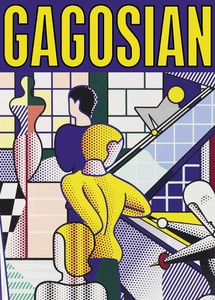
Now available
Gagosian Quarterly Summer 2024
The Summer 2024 issue of Gagosian Quarterly is now available, featuring a detail of Roy Lichtenstein’s Bauhaus Stairway Mural (1989) on the cover.
Extended through September 17, 2016
The critic and curator Philip Rawson, an eloquent guide to the means and methods of drawing over the ages, points out that until the Italian Quattrocento, no European sculptor was supposed to be able to draw. In the medieval period, only those sculptors who also worked in two dimensions drew habitually; any other sculptor who needed, say, to show a client a proposed design hired a draftsman to make one. And when sculptors began to make drawings (for their own use or to guide assistants), they tended to do so without thinking of the format of the paper as a frame to which the image should relate. Instead, the image was generally treated as an independent motif, composed of mutually related units and placed anywhere on the sheet. In this approach, the space of the paper outside the image was not incorporated into the design but functioned like the open, empty space around actual sculptures. . . . In contrast, Rawson observes, painters’ drawings have tended to treat the usually rectangular format of the paper as a frame to which the image content relates.
—John Elderfield
Gagosianis pleased to present Plane.Site, a cross-generational exhibition of modern and contemporary artists organized by Sam Orlofsky to inaugurate the San Francisco gallery.
Plane.Site explores the dynamic exchanges between drawing and sculpture in the work of artists from the postwar period to the present day. To that end, each participating artist is represented by works in both two and three dimensions.
In an essay accompanying the exhibition, John Elderfield observes that “Moving from the boundaries of two dimensions into free space, artists may feel an obvious thrill of escape,” while noting that there is also “the less obvious but equally liberating escape from open space, with its grip of the literal, for the spontaneity of movement and freedom of illusion attainable in the haven of the two-dimensional.” Consistent with his observation, many modern and contemporary artists have evaded the dictate of the rectangular frame, allowing the drawn line to exist on different planes, and eventually, to descend from the canvas into three dimensions. In stepping away from the drawn line on paper and into the heft and mass of three-dimensional sculpture, such artists continued to negotiate the rectangular plane, even when composing in open space.

The Summer 2024 issue of Gagosian Quarterly is now available, featuring a detail of Roy Lichtenstein’s Bauhaus Stairway Mural (1989) on the cover.
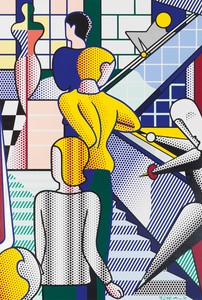
Alice Godwin and Alison McDonald explore the history of Roy Lichtenstein’s mural of 1989, contextualizing the work among the artist’s other mural projects and reaching back to its inspiration: the Bauhaus Stairway painting of 1932 by the German artist Oskar Schlemmer.
Join president of the Picasso Museum, Paris, Cécile Debray; curator, writer, biographer, and historian Annie Cohen-Solal; art historian Vérane Tasseau; and Gagosian director Serena Cattaneo Adorno as they discuss A Foreigner Called Picasso. Organized in association with the Musée national Picasso–Paris and the Palais de la Porte Dorée–Musée national de l’histoire de l’immigration, Paris, the exhibition reframes our perception of Picasso and focuses on his status as a permanent foreigner in France.
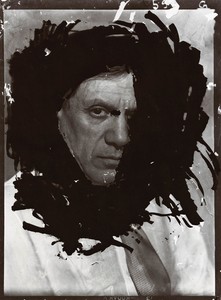
Cocurator of the exhibition A Foreigner Called Picasso, at Gagosian, New York, Annie Cohen-Solal writes about the genesis of the project, her commitment to the figure of the outsider, and Picasso’s enduring relevance to matters geopolitical and sociological.
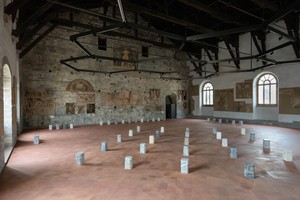
An installation by Rachel Whiteread in the Palazzo della Ragione, Bergamo, Italy, commissioned by Galleria d’Arte Moderna e Contemporanea di Bergamo and cocurated by Lorenzo Giusti and Sara Fumagalli, opened in June of 2023 and ran into the fall. Conceived in relation to the city, the architecture of the site, and the history of the region, it comprised sixty sculptures made with local types of stone. Fumagalli writes on the exhibition and architect Luca Cipelletti speaks with Whiteread.
In celebration of the centenary of Roy Lichtenstein’s birth, Irving Blum and Dorothy Lichtenstein sat down to discuss the artist’s life and legacy, and the exhibition Lichtenstein Remembered curated by Blum at Gagosian, New York.
Gagosian and the Art Students League of New York hosted a conversation on Roy Lichtenstein with Daniel Belasco, executive director of the Al Held Foundation, and Scott Rothkopf, senior deputy director and chief curator of the Whitney Museum of American Art, New York. Organized in celebration of the centenary of the artist’s birth and moderated by Alison McDonald, chief creative officer at Gagosian, the discussion highlights multiple perspectives on Lichtenstein’s decades-long career, during which he helped originate the Pop art movement. The talk coincides with Lichtenstein Remembered, curated by Irving Blum and on view at Gagosian, New York, through October 21.
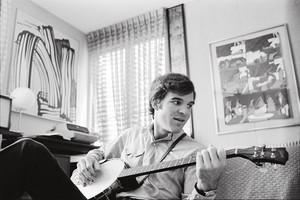
Actor and art collector Steve Martin reflects on the friendship and professional partnership between Roy Lichtenstein and art dealer Irving Blum.
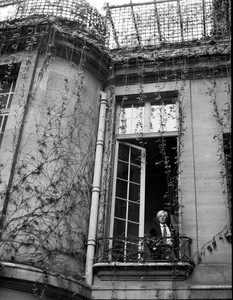
Andy Warhol’s Insiders at the Gagosian Shop in London’s historic Burlington Arcade is a group exhibition and shop takeover that feature works by Warhol and portraits of the artist by friends and collaborators including photographers Ronnie Cutrone, Michael Halsband, Christopher Makos, and Billy Name. To celebrate the occasion, Makos met with Gagosian director Jessica Beck to speak about his friendship with Warhol and the joy of the unexpected.
In this video, Jessica Beck, director at Gagosian, Beverly Hills, sits down to discuss the three early paintings by Andy Warhol from 1963 featured in the exhibition Andy Warhol: Silver Screen, at Gagosian in Paris.
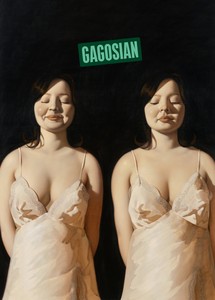
The Winter 2022 issue of Gagosian Quarterly is now available, featuring Anna Weyant’s Two Eileens (2022) on its cover.
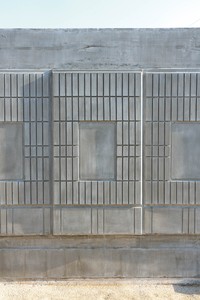
On the occasion of the unveiling of her latest Shy Sculpture, in Kunisaki, Japan, Rachel Whiteread joined curator and art historian Fumio Nanjo for a conversation about this ongoing series.They address the origins of these sculptures and the details of each project.
Violinist Alina Ibragimova performs Bach’s Sonata for Solo Violin No. 1 in G Major: Adagio (BWV 1001, c. 1720) from within Richard Serra’s sculpture Transmitter (2020) at Gagosian, Le Bourget. Organized by Bold Tendencies, a nonprofit organization that commissions artists to produce site-specific projects and present performances, in collaboration with Gagosian, this recorded performance took place on May 8, 2022 before a live concert of Olivier Messiaen’s Quatuor pour la fin du temps (Quartet for the End of Time, 1941).
Cellist Mario Brunello performs Bach’s Cello Suite No. 1 in G Major: Prelude (BWV 1007, c. 1717–23) within Richard Serra’s sculpture Transmitter (2020) at Gagosian, Le Bourget. Organized by Bold Tendencies—a nonprofit that commissions artists to produce site-specific projects and present performances—in collaboration with Gagosian, this recorded performance took place on May 8, 2022, before a live concert of Olivier Messiaen’s Quatuor pour la fin du temps (Quartet for the End of Time, 1941).
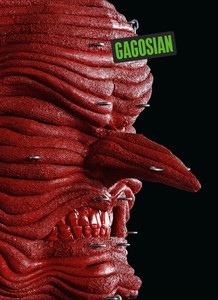
The Fall 2022 issue of Gagosian Quarterly is now available, featuring Jordan Wolfson’s House with Face (2017) on its cover.
In this video, Tatiana Trouvé provides an overview of her latest installation, presented at the Centre Pompidou, Paris. The exhibition, whose title translates to The Great Atlas of Disorientation, includes a selection of drawings and sculptures that create fantastical landscapes where reality engages in infinite exchanges with its doubles.

Eleonora Di Erasmo, cocurator of Un/veiled: Cy Twombly, Music, Inspirations, a program of concerts, video screenings, and works by Cy Twombly at the Fondazione Nicola Del Roscio, Rome, reflects on the resonances and networks of inspiration between the artist and music. The program was the result of an extensive three-year study, done at the behest of Nicola Del Roscio in the Rome and Gaeta offices of the Cy Twombly Foundation, intended to collect, document, and preserve compositions by musicians around the world who have been inspired by Twombly’s work, or to establish an artistic dialogue with them.

Le Couvent Sainte-Marie de La Tourette, in Éveux, France, is both an active Dominican priory and the last building designed by Le Corbusier. As a result, the priory, completed in 1961, is a center both religious and architectural, a site of spiritual significance and a magnetic draw for artists, writers, architects, and others. This fall, at the invitation of Frère Marc Chauveau, Giuseppe Penone will be exhibiting a selection of existing sculptures at La Tourette alongside new work directly inspired by the context and materials of the building. Here, Penone and Frère Chauveau discuss the power and peculiarities of the space, as well as the artwork that will be exhibited there.

Gillian Pistell writes on the loaded symbol of the American flag in the work of postwar and contemporary artists.
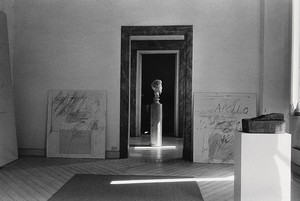
In 2020, the Museum of Fine Arts, Boston, announced their plan for a survey of Cy Twombly’s artwork alongside selections from their permanent ancient Greek and Roman collection. The survey was postponed due to the lockdowns necessitated by the coronavirus pandemic, but was revived in 2022 with a presentation at the J. Paul Getty Museum in Los Angeles from August 2 through October 30. In 2023, the exhibition will arrive at the Museum of Fine Arts, Boston. The curator for the exhibition, Christine Kondoleon, and Kate Nesin, author of Cy Twombly’s Things (2014) and advisor for the show, speak with Gagosian director Mark Francis about the origin of the exhibition and the aesthetic and poetic resonances that give the show its title: Making Past Present.